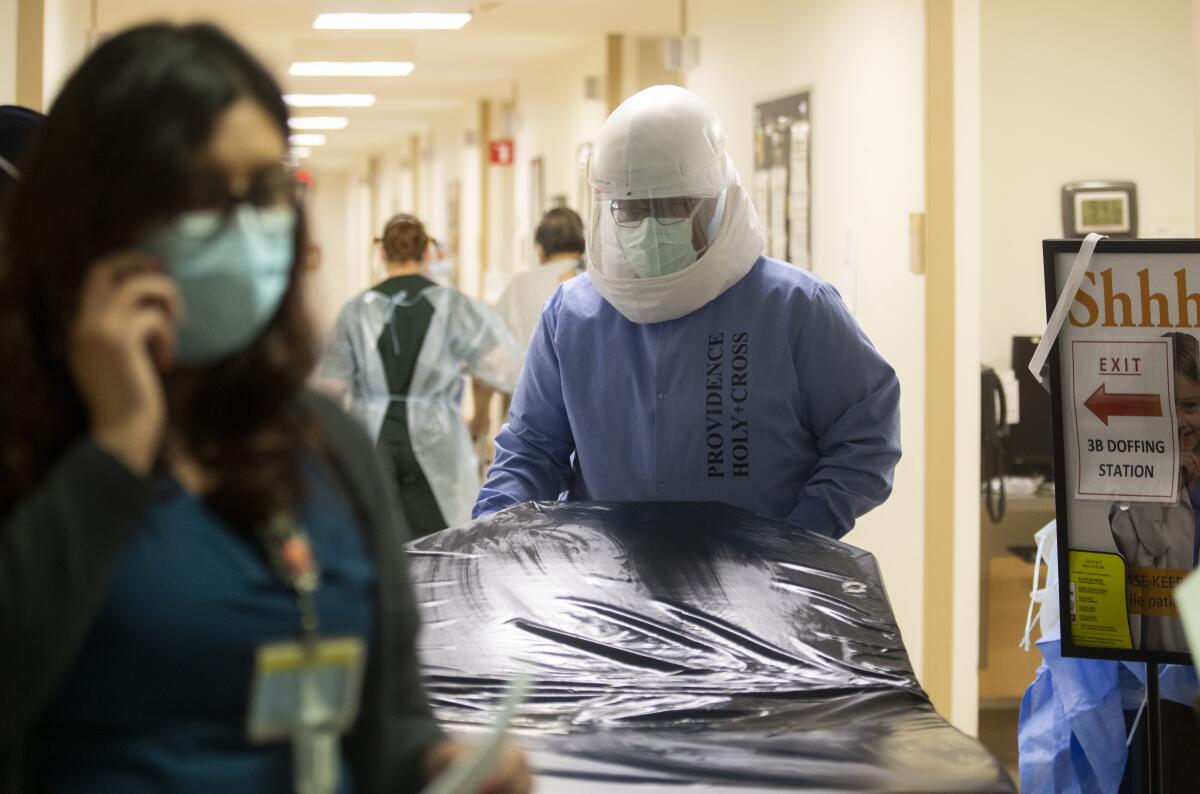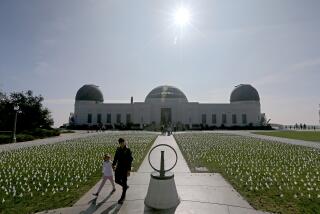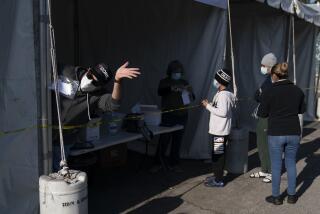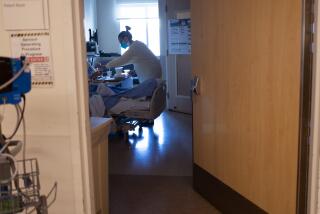Los Angeles County records its 10,000th COVID-19 death

- Share via
Los Angeles County on Wednesday tallied its 10,000th COVID-19 death, “a terrible milestone,” said Public Health Director Barbara Ferrer.
L.A. County on Wednesday broke the single-day record for COVID-19 deaths for the second day in a row — 262 deaths, breaking the record from Tuesday, when 242 deaths were reported. The records were influenced in part by a backlog of deaths from the Christmas holiday weekend.
L.A. County is now averaging about 129 COVID-19 deaths a day over the past week, a figure that has never been higher. The county is also averaging about 13,000 new coronavirus cases a day — a bit better than the high in mid-December of 14,800 but still 10 times as bad as the situation on Nov. 1, when it was tallying about 1,300 cases a day.
“Most heartbreaking is that if we had done a better job reducing transmission of the virus, many of these deaths would not have happened,” Ferrer said.
The death milestone came as hospitals continued to buckle under the strain of so many patients.
There are lengthy delays in offloading patients from ambulances, causing “some unfortunate outcomes,” county officials said Wednesday.
“Unfortunately this week, there have been some unfortunate outcomes from patients in hospitals and ambulances across the county who couldn’t be offloaded into an emergency department in a timely manner,” said Dr. Christina Ghaly, the L.A. County health services director.
County officials have been concerned about patients suffering from things like strokes, heart attacks and seizures waiting in ambulances outside of hospitals, said Cathy Chidester, director of the county Emergency Medical Services Agency. “The early intervention, in some of these cases if you don’t get it, may lead to worse outcomes,” she said.
Officials are resorting to highly unusual measures to reduce demand on hospitals.
Memos issued by the county’s Emergency Medical Services Agency say that certain ambulance patients can be offloaded into waiting rooms instead of emergency rooms; when 911 is called, patients who have a do-not-resuscitate directive will not be transported to acute-care facilities such as hospitals; neither will certain trauma patients whose hearts have stopped.
Under normal circumstances, even patients whose hearts have stopped would still be rushed to emergency rooms. But with hospitals in overwhelming crisis, officials have agreed to stop transporting those with virtually no hope of survival. The agency is also allowing emergency medical service providers to decline to transport low-risk patients to hospitals with mild respiratory illness.
“These are challenging times for our entire healthcare system,” said the memo issued by the agency.
“Our hospitals continue to be under siege,” Ghaly said. “All of our hospitals are under an incredible degree of strain, and this is especially true for our smaller hospitals. [All] hospitals though, are being inundated with COVID patients.”
Among the four public hospitals run by L.A. County, two-thirds of all patients in the intensive care units have COVID-19.
“Many hospitals have reached a point of crisis and are having to make very difficult decisions about patient care,” Ghaly said. “Staff are constrained and patient demand continues to increase. This means that we’re struggling to provide care, not just for those patients with COVID, but for those who have other injuries or accidents as well.”
Ghaly urged people to stay at home for New Year’s celebrations — the only way to minimize another surge expected to materialize again in the coming weeks.
“We absolutely have to get this surge under control, and it will take everyone’s effort to do so,” Ghaly said. “If we don’t, then the beginning of 2021 will be worse than the end of 2020, and that is not a situation that any of us want to have happen.”
More to Read
Sign up for Essential California
The most important California stories and recommendations in your inbox every morning.
You may occasionally receive promotional content from the Los Angeles Times.












